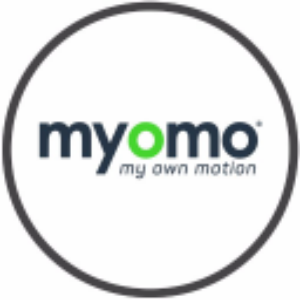Myomo Participates in Ground-breaking Brain-computer Interface Trial
Myomo, Inc. (NYSE American: MYO) has announced successful completion of the first phase of clinical trials at Thomas Jefferson University, where brain-embedded sensors were used to control a MyoPro powered brace for stroke patients. Principal investigator Mijail Serruya described it as a proof of concept for future studies involving fully implanted wireless electrodes. Myomo's Vice President highlighted that over a thousand patients have benefited from the MyoPro, which aims to offer improved user independence. The announcement signifies potential advancements in neurological rehabilitation.
- Successful completion of initial clinical trials for brain-control technology, indicating progress in enhancing MyoPro's functionality.
- Over a thousand stroke patients have successfully used MyoPro to regain arm function, demonstrating its effectiveness.
- Dependence on external financing to maintain operations may pose risks if cash flow breakeven is not achieved.
- Potential issues in achieving reimbursement from third-party payers could affect product accessibility.
Insights
Analyzing...
Myomo, Inc. (NYSE American: MYO) (“Myomo” or the “Company”), a wearable medical robotics company that offers increased functionality for those suffering from neurological disorders and upper-limb paralysis, today announced that Thomas Jefferson University of Philadelphia has successfully completed the first phase of clinical trials using sensors imbedded in the brain to control a MyoPro powered brace worn by a stroke patient.
The story is detailed in the University web site https://www.jefferson.edu/about/news-and-events/2021/2/can-brain-implants-improve-mobility-after-stroke.html and on CBS Sunday Morning https://youtu.be/GNJTrtNxTFk. In the story, principal investigator of the study Mijail Serruya, MD, PhD, an assistant professor of neurology at Thomas Jefferson University, said “This study serves as a proof of concept, a necessary bridge to future studies that would use fully implanted wireless electrodes to improve movement after stroke.”
Jon Naft, Vice President and General Manager at Myomo, said, “Over a thousand patients, the majority being stroke survivors, have received a MyoPro to restore function in their paralyzed arms using its non-invasive sensors on the surface of the skin of their arms. What the Jefferson research foretells is a day when MyoPro might be controlled without requiring those sensors, just by the patient “thinking” to move his arm or hand. This could make it possible to serve patients with insufficient signals in their affected limbs and to wear MyoPro over regular fashion garments, helping to move users one step closer to full independence.”
About Myomo
Myomo, Inc. is a wearable medical robotics company that offers improved arm and hand function for those suffering from neurological disorders and upper limb paralysis. Myomo develops and markets the MyoPro product line. MyoPro is a powered upper limb orthosis designed to support the arm and restore function to the weakened or paralyzed arms of patients suffering from CVA stroke, brachial plexus injury, traumatic brain or spinal cord injury, ALS or other neuromuscular disease or injury. It is currently the only marketed device that, sensing a patient’s own EMG signals through non-invasive sensors on the arm, can restore an individual’s ability to perform activities of daily living, including feeding themselves, carrying objects and doing household tasks. Many are able to return to work, live independently and reduce their cost of care. Myomo is headquartered in Cambridge, Massachusetts, with sales and clinical professionals across the U.S and representatives internationally. For more information, please visit www.myomo.com.
Forward Looking Statements
This press release contains forward-looking statements regarding the Company’s future business expectations, including benefits expected from brain-computer interface research, which are subject to the safe harbor provisions of the Private Securities Litigation Reform Act of 1995. These forward-looking statements are only predictions and may differ materially from actual results due to a variety of factors.
These factors include, among other things:
- our sales and commercialization efforts;
- our ability to achieve reimbursement from third-party payers for our products;
- our dependence upon external sources for the financing of our operations, to the extent that we do not achieve or maintain cash flow breakeven;
- our ability to effectively execute our business plan and scale up our operations;
- our expectations as to our development programs; and
- general market, economic, environmental and social factors, including the ongoing COVID-19 pandemic, that may affect the evaluation, fitting, delivery and sale of our products to patients.
More information about these and other factors that potentially could affect our financial results is included in Myomo’s filings with the Securities and Exchange Commission, including those contained in the risk factors section of the Company’s annual report on Form 10-K, quarterly reports on Form 10-Q and other filings with the Commission. The Company cautions readers not to place undue reliance on any such forward-looking statements, which speak only as of the date made. Although the forward-looking statements in this release of financial information are based on our beliefs, assumptions and expectations, taking into account all information currently available to us, we cannot guarantee future transactions, results, performance, achievements or outcomes. No assurance can be made to any investor by anyone that the expectations reflected in our forward-looking statements will be attained, or that deviations from them will not be material and adverse. The Company disclaims any obligation subsequently to revise any forward-looking statements to reflect events or circumstances after the date of such statements or to reflect the occurrence of anticipated or unanticipated events.
View source version on businesswire.com: https://www.businesswire.com/news/home/20210401005058/en/







